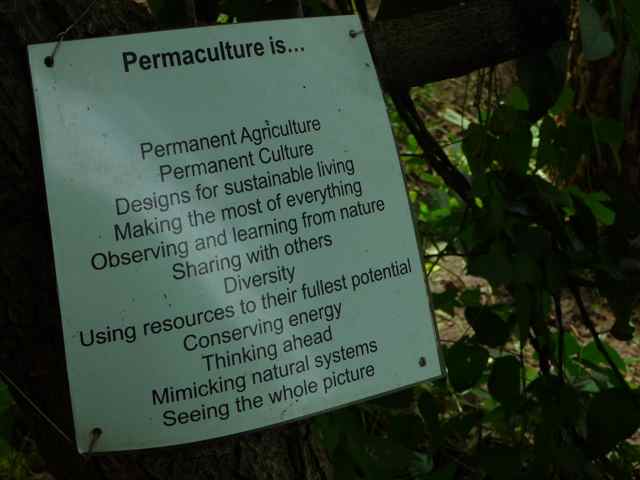About Permaculture
 Permaculture is the sustainable design of agricultural ecosystems, which have diversity, stability and resilience. It fits very closely and enhances the JANEEMO model of trees for food, fuel, medicine and income. As well as planting trees and shrubs of different heights with complementary growing patterns and nutrients, the system also maximises water conservation and the use of natural fertilisers and pesticides.
Permaculture is the sustainable design of agricultural ecosystems, which have diversity, stability and resilience. It fits very closely and enhances the JANEEMO model of trees for food, fuel, medicine and income. As well as planting trees and shrubs of different heights with complementary growing patterns and nutrients, the system also maximises water conservation and the use of natural fertilisers and pesticides.
Permaculture is guided by a set of ethics, which take responsibility for the environment, for benefits now and in the future.
Permaculture practices include:
 Zones: these are a way of organizing design elements in a human environment on the basis of the frequency of human use and plant or animal needs. Frequently manipulated or harvested elements of the design are located close to the house in zones 1 and 2. Less frequently used or manipulated elements, and elements that benefit from isolation (such as wild species) are farther away. Zone strategy involves positioning things appropriately.
Zones: these are a way of organizing design elements in a human environment on the basis of the frequency of human use and plant or animal needs. Frequently manipulated or harvested elements of the design are located close to the house in zones 1 and 2. Less frequently used or manipulated elements, and elements that benefit from isolation (such as wild species) are farther away. Zone strategy involves positioning things appropriately.
‘Layers’: A mature ecosystem has a huge number of relationships between its component parts: trees, understory, ground cover, soil, fungi, insects and animals. Because plants grow to different heights, a diverse community of life is able to grow in a relatively small space, as each layer is stacked one on top of another.
Supportive guilds: a term used to describe plants and animals that work supportively together, mimicking natural forest systems. The end goal is to have a garden that requires little or no ongoing human maintenance or resource inputs. Finding those plants or animals that complement each other, is the first step in designing a coherent system. Good guilds should have: food and products for humans; food for the soil; groundcovers; diggers; protectors; climbers and supporters.
Conserving water resources: using water from boreholes, in bathing areas, and near washing stations. Stopping water with swales and bunds, Spreading water along land contours, Sinking water into the soil, Shading land using trees, and mulching to ensure water stays in the soil
Making patterns: all things, even the wind, the waves and the Earth moving around the Sun, form patterns. In pattern application, permaculture designers are encouraged to develop an awareness of the patterns that exist in nature (and how these function) and how they can be utilized to satisfy the specific design needs of a specific site.
The edge effect: is the ecological effect of placing contrasting environments side-by-side. It is said that where vastly differing systems meet, there is an intense area of productivity and useful connections. An example of this is the coast, which meets a disproportionate percentage of human and animal needs. By using spirals and wavy lines this effect may be used in gardens in e.g. herb gardens or ponds




